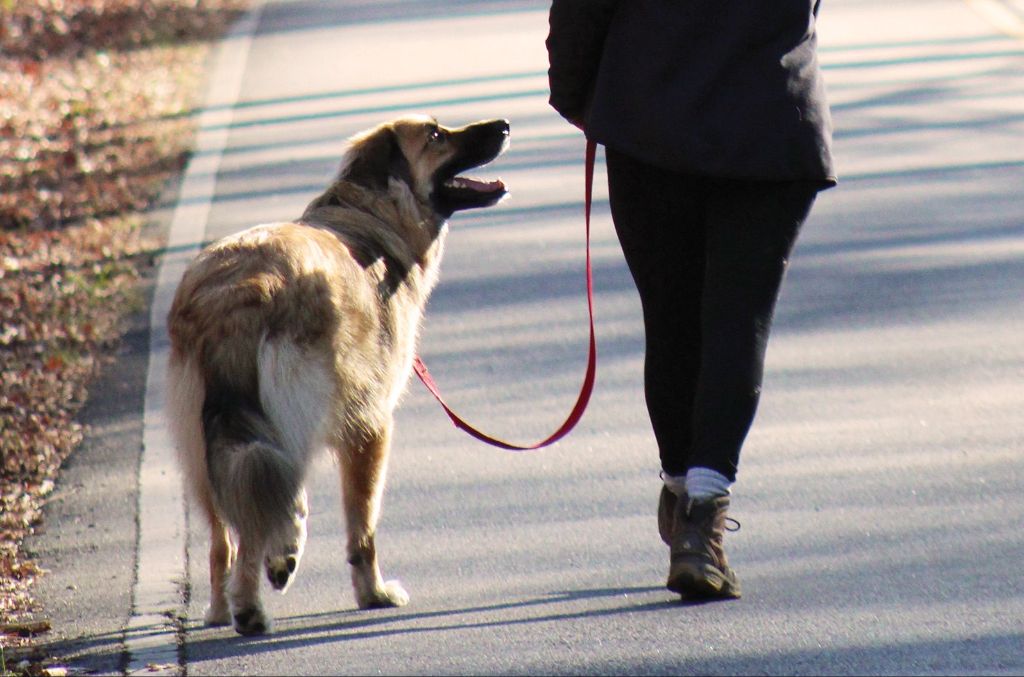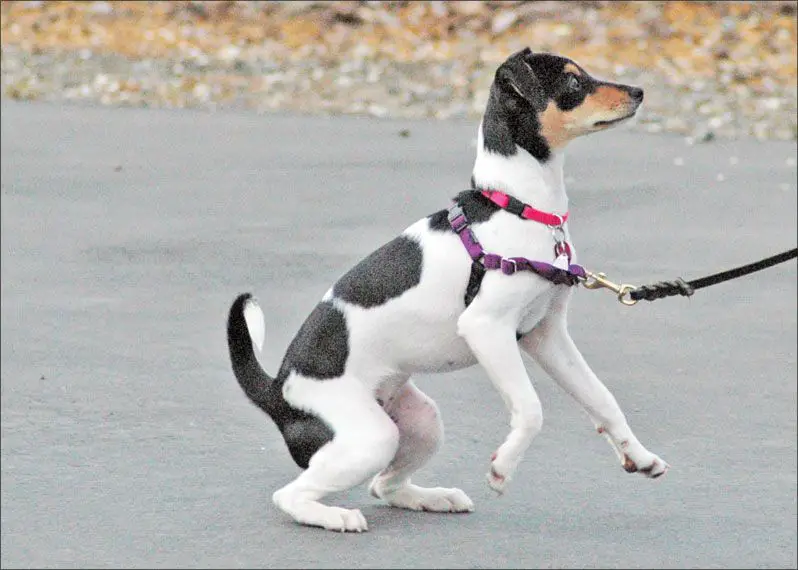Introduction
Dogs pulling their owners on walks is a common issue that many pet parents struggle with. A dog’s desire to explore new sights and smells can quickly turn a leisurely stroll into a battle of wills. While using a harness may seem like an easy solution, some experts argue they can enable and reinforce pulling behaviors. This article will take an in-depth look at the pros and cons of harnesses for dogs that pull, examining whether they are truly bad or just misunderstood.
What is Pulling?
Pulling is a common behavior in dogs where they exert force on the leash by moving forward and ahead of their human while on a walk. It occurs because dogs are naturally inclined to explore their surroundings using their excellent sense of smell, and become over-excited when they pick up an interesting scent outside. The dog’s instinct is to follow the scent, but the leash prevents this, causing them to pull against the leash. Dogs that are particularly high energy or eager to explore are especially prone to pulling.
Pulling stems from the dog’s innate drive and energy. It is not an act of aggression or defiance, even though it may seem that way to the human holding the leash. The dog simply becomes very engaged with the environment and wants to rush ahead. Without proper training, dogs naturally default to pulling on leash since they associate the leash being attached as a cue that it’s time for an adventure.
Why Dogs Pull

There are several common reasons why dogs tend to pull when on a leash:
- Excitement – Dogs pull when they are excited to go on a walk and want to get moving faster.
- Seeking Attention – Pulling is a way for dogs to get their owner’s attention, even if it’s negative attention.
- Distraction – Dogs tend to pull when they are distracted by sights, sounds and smells, wanting to investigate further.
- Prey Drive – Some dogs have a high prey drive and will pull towards other animals, people or objects they want to chase.
- Fear/Anxiety – Dogs may pull to get away from something causing fear or anxiety, like loud noises.
- Breed Instinct – Breeds used for pulling sleds or carts have an innate desire to pull against resistance.
- Lack of Exercise – Dogs with pent up energy may pull more from inadequate walks and exercise.
- Lack of Training – Untrained dogs haven’t learned not to pull on the leash.
Identifying the root cause of your dog’s pulling can help you address the behavior through proper training and exercise.
Risks of Pulling
Pulling on leash can pose a variety of risks and problems for dogs. The main concerns associated with dogs who pull habitually include the following:
Neck/Throat Injury – Pulling puts a lot of pressure on a dog’s neck and throat. Using collars like choke chains or prong collars can cause even more strain, and increase the likelihood of injuries to the trachea and esophagus. These injuries can be quite serious in some cases.
Hinders Training – Dogs who are permitted to pull learn that pulling gets them where they want to go. This makes it very difficult to train loose leash walking and reinforce good leash manners. Pulling often gets worse over time if not properly addressed.
Safety Issues – Pulling can create unsafe situations for both dogs and their humans. A dog who suddenly lunges or takes off while pulling can cause their human to trip or get dragged. This can lead to injuries and makes controlling the dog very difficult.
Pros/Cons of Harnesses for Pullers

Harnesses are commonly used tool for dogs that pull during walks. However, there are pros and cons to consider when using a harness for a dog that pulls.
Pros of harnesses:
- Distributes force across the chest instead of the neck
- Can help prevent injury caused by pulling on a regular collar
- Provides the owner more control over a strong puller
- More difficult for dogs to slip out of than a collar
Cons of harnesses:
- Can encourage pulling behavior since the dog is able to pull forward
- Some dogs may try to back out of the harness
- Does not address the underlying issue of pulling on walks
- May still cause choking if attached on the back versus the chest
When deciding whether to use a harness for a pulling dog, owners should weigh the potential benefits and downsides. Proper training is still needed to address the root behavior.
Alternatives to Harnesses
While harnesses can be useful training tools for dogs that pull, they aren’t the only option. Here are some alternatives to try:

Training Tips
The best way to curb pulling is through proper leash training. Start training in low distraction areas and use positive reinforcement techniques. Reward your dog with treats for walking next to you without pulling. Change direction frequently so your dog has to refocus attention on you. Practice heeling commands. Be consistent with training and your dog will learn not to pull over time.
Head Collars
Head collars fit around a dog’s snout and neck, applying gentle pressure when they pull so they are redirected to face you. This gives you more control while walking. Introduce a head collar slowly so your dog can get used to wearing it. Never yank or jerk your dog with a head collar. Used correctly, they can teach a dog not to pull.
No-Pull Devices
No-pull harnesses and leash attachments work by tightening around a dog when they pull on the leash, which discourages the behavior. These include front-clip harnesses, martingale leads, and bungee leashes. Look for no-pull devices designed to avoid injury. Introduce them gradually and use proper training techniques along with the equipment.
When to Use a Harness
Even though using a harness can encourage pulling in some dogs, there are situations where a harness may be preferable:
-
On small or toy breed dogs, a harness distributes pressure over a larger area and may reduce risk of injury to the trachea if the dog pulls.
-
For dogs that are prone to slipping out of collars, like greyhounds or dogs with narrow heads.
-
When walking elderly dogs or dogs with mobility, spinal, or respiratory issues – a harness provides more control and support.
-
In crowded areas where there is risk of the leash catching on objects or other dogs – a harness provides more safety.
-
For dogs still learning not to pull, as an interim solution before training is complete.
-
If the owner has limited mobility or strength, a harness gives them more control.
-
In cases where a dog’s pulling strength overpowers a collar’s deterrence.
While harnesses may encourage pulling, there are definitely situations where they can provide control and reduce injury risks if used properly.
Choosing a Proper Harness
When selecting a harness for a dog that pulls, proper fit and function should be top considerations. Ill-fitting harnesses can rub and chafe, while poorly designed ones may not distribute force in an optimal manner.
Look for a harness made of sturdy but comfortable material, like nylon or padded mesh, that won’t irritate the dog’s skin. Make sure to measure your dog and follow size guidelines, checking that the harness doesn’t dig into the armpits or restrict neck movement.
Front-clip harnesses that attach the leash at the dog’s chest are often recommended, as they can help minimize pulling by redirecting the dog toward you. Easy-to-buckle styles are also ideal to prevent escape and ensure proper tightness.
Avoid very thin strap harnesses and those that tighten at the throat. Opt for a well-constructed harness with robust straps across the chest and belly for optimal control and comfort.
With an appropriately fitted, high-quality harness, you can walk your dog safely without undue strain from pulling on either end of the leash.
Training a Dog Not to Pull

Teaching a dog not to pull on leash takes dedication and consistency, but it can be done. Here are some effective leash training methods:
Use a clicker and treats to reinforce loose leash walking. Click and reward any time the leash is loose. Don’t wait for the dog to pull before providing feedback.
Stop immediately when the leash gets tight. Stand still until the leash relaxes again. Then continue walking. This teaches the dog that pulling means no forward progress.
Use the “be a tree” method. When the dog pulls, plant your feet and stand completely still, like a tree. Wait for the dog to return to your side before moving again.
Practice turns and changes of direction during walks. The frequent shifts will help keep the dog’s attention on you.
Work on impulse control. Have the dog sit and make eye contact with you before walks, when crossing streets, before opening doors, etc.
Consider head collars and no-pull harnesses designed to turn a dog around when pulling. But still reinforce not pulling.
Keep training sessions short and end on a positive note. Five minutes of training several times a day is better than a long, frustrating session.
Be patient! It can take weeks or months of daily practice for a dog to learn to walk nicely on leash.
Conclusion
In summary, using a harness on dogs that pull heavily is generally not recommended. While a harness may provide more control over a strong puller compared to a collar, it can enable and reinforce the pulling behavior. The pressure from pulling against a harness can also lead to injury over time.
The best solution is to train dogs not to pull from an early age using positive reinforcement techniques. For adult dogs that pull, try alternative equipment like head halters or no-pull harnesses designed to discourage pulling by turning the dog. Consult a trainer if needed for professional guidance.
When used properly in limited circumstances, harnesses can provide control without harming the trachea. However, they should not be the sole solution for dogs that chronically pull. Address the underlying issue through training, exercise, and meeting the dog’s needs. With time and consistency, even enthusiastic pullers can learn to walk nicely on a loose leash.
In conclusion, while harnesses are not inherently bad, they are best avoided for dogs with a strong pulling tendency. Focus on long-term training rather than relying solely on equipment to manage the behavior. With patience and the right approach, you can curb pulling and help your dog become a model walker.
